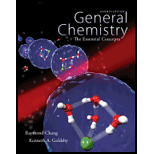
Interpretation: The
Concept Introduction:
Atomic radius:
Atomic radius is the distance between the atomic nucleus and outermost electron of an atom. From the atomic radius, the size of atoms can be visualized. But there is no specific distance from nucleus to electron due to electron cloud around the atom does not have well-defined boundary.
Periodic Table: The available chemical elements are arranged considering their atomic number, the electronic configuration and their properties. The elements placed on the left of the table are metals and non-metals are placed on right side of the table.
In periodic table the horizontal rows are called periods and the vertical column are called group. There are seven periods and 18 groups present in the table and some of those groups are given specific name as follows,
Mass number: It is given by the total number of protons and the neutrons present in the nucleus of the element and it is denoted by symbol A. The subscript that lies on the left side of the symbol of the element represents the mass number.
First ionization energy:
The ionization energy is the minimum energy required to remove the electron from an isolated atom which is in the gaseous state results to give gaseous ion with one positive charge.
Second ionization:
Repeating the same process that is removal of another electron that is second electron from the resulting ion of first ionization is called second ionization.
Third ionization energy:
Removal of electron from ion that results from the second ionization is called third ionization which results to give ion with three positive charges which shows, three electrons gets removed from the atom and the energy associated with it is called third ionization energy.
Cation: Removal of electron from the atom results to form positively charged ion called cation.
Anion: Addition of electron to atom results to form negatively charged ion called anion.
The net charge present in the element denotes the presence or absence of electrons in the element.
In periodic table the horizontal rows are called periods and the vertical column are called group.
Effective Nuclear Charge: It is the positive charge experienced by the valence electrons present in the element due to the screening of innermost electrons present near to the nucleus.
Want to see the full answer?
Check out a sample textbook solution
Chapter 8 Solutions
Workbook with Solutions to Accompany General Chemistry
 ChemistryChemistryISBN:9781305957404Author:Steven S. Zumdahl, Susan A. Zumdahl, Donald J. DeCostePublisher:Cengage Learning
ChemistryChemistryISBN:9781305957404Author:Steven S. Zumdahl, Susan A. Zumdahl, Donald J. DeCostePublisher:Cengage Learning ChemistryChemistryISBN:9781259911156Author:Raymond Chang Dr., Jason Overby ProfessorPublisher:McGraw-Hill Education
ChemistryChemistryISBN:9781259911156Author:Raymond Chang Dr., Jason Overby ProfessorPublisher:McGraw-Hill Education Principles of Instrumental AnalysisChemistryISBN:9781305577213Author:Douglas A. Skoog, F. James Holler, Stanley R. CrouchPublisher:Cengage Learning
Principles of Instrumental AnalysisChemistryISBN:9781305577213Author:Douglas A. Skoog, F. James Holler, Stanley R. CrouchPublisher:Cengage Learning Organic ChemistryChemistryISBN:9780078021558Author:Janice Gorzynski Smith Dr.Publisher:McGraw-Hill Education
Organic ChemistryChemistryISBN:9780078021558Author:Janice Gorzynski Smith Dr.Publisher:McGraw-Hill Education Chemistry: Principles and ReactionsChemistryISBN:9781305079373Author:William L. Masterton, Cecile N. HurleyPublisher:Cengage Learning
Chemistry: Principles and ReactionsChemistryISBN:9781305079373Author:William L. Masterton, Cecile N. HurleyPublisher:Cengage Learning Elementary Principles of Chemical Processes, Bind...ChemistryISBN:9781118431221Author:Richard M. Felder, Ronald W. Rousseau, Lisa G. BullardPublisher:WILEY
Elementary Principles of Chemical Processes, Bind...ChemistryISBN:9781118431221Author:Richard M. Felder, Ronald W. Rousseau, Lisa G. BullardPublisher:WILEY





